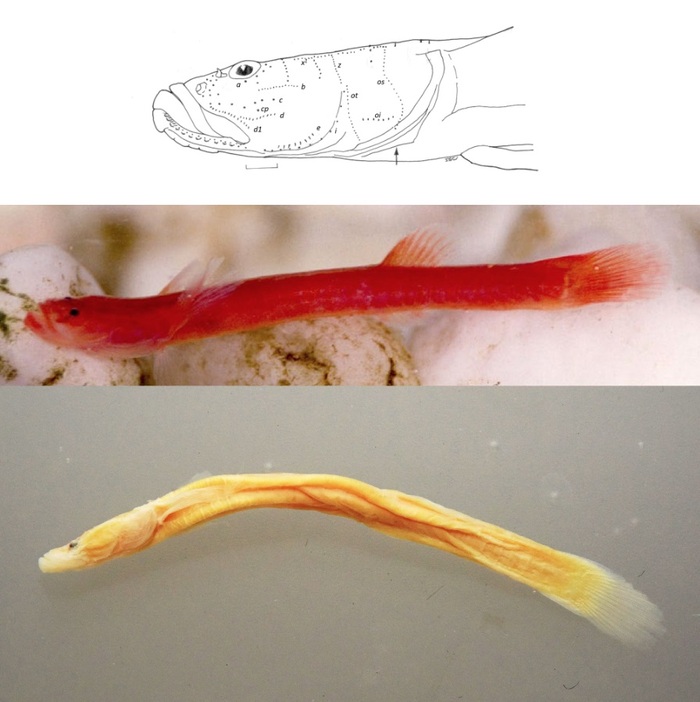Introduction
Discovery and Classification
Physical Description
Habitat and Distribution
Taxonomy and Scientific Importance
Key Features of Formosaneleotris hualienensis
Conclusion
In 2024, a fascinating new species of sleeper fish was discovered in the inland waters of Taiwan’s Hualien River basin. This species, named Formosaneleotris hualienensis, adds a new genus to the Eleotridae family, commonly known as sleeper gobies. The fish is not only remarkable for its unique physical features but also because it is found exclusively in Taiwan.
In this article, we’ll dive into the discovery of Formosaneleotris hualienensis, explore its distinctive characteristics, and understand its significance in the field of ichthyology.

Formosaneleotris hualienensis was officially described by I-Shiung Chen in 2024. The fish was first identified through netting in the Hualien River basin, located in eastern Taiwan. This marks the first time this species has been documented in the scientific literature.
The new genus, Formosaneleotris, alongside the species hualienensis, was introduced due to the fish’s unique features that set it apart from other species in the Eleotridae family.
The formal description of this species was published in the Zootaxa journal, underDOI:doi.org/10.11646/zootaxa.5550.1.23.
Formosaneleotris hualienensis is a relatively small sleeper fish with several distinctive traits that make it stand out among other species in its family. Here’s a breakdown of the physical characteristics:
Size: The holotype, a specimen of the fish, measures about 44.2 mm Standard Length (SL).
Fins: The fish lacks a first dorsal fin and has a second dorsal fin with a typical I/8 structure. The anal fin also has the I/8 structure, while the pectoral fin contains 13-14 rays.
Squamation: Unlike many other fish, Formosaneleotris hualienensis has no scales, with its body being completely naked.
Vertebral Count: The fish has a 10 + 14 = 24 vertebrae, which is a unique feature among sleeper gobies.
Branchiostegal Rays: The fish has 6 branchiostegal rays, a significant characteristic for distinguishing it from other species in the family.
Head Structure: The head lacks a lateral-line canal and pores, but it does feature longitudinally arranged infraorbital sensory papillae.
Formosaneleotris hualienensis is native to the Hualien River basin in eastern Taiwan, a region known for its rich biodiversity. The fish has only been observed in this specific area, making it geographically restricted.
The habitat of this species is primarily inland freshwater, and it thrives in the river's unique ecosystem. The pristine waters of the Hualien River provide a perfect environment for this sleeper goby species, which prefers calm waters with stable temperatures.
The discovery of Formosaneleotris hualienensis adds a significant contribution to the taxonomy of sleeper gobies. It introduces a new genus to the Eleotridae family, expanding our understanding of the biodiversity found in Taiwan’s freshwater ecosystems.
Formosaneleotris is distinguished from other genera within the Eleotridae by a combination of features, including the absence of a first dorsal fin, the lack of scales, and its distinctive vertebral and fin structures. The fish’s unusual coloration, with a bloody red body and a deep red infraorbital stripe, further contributes to its uniqueness.
This discovery is important not only for taxonomists but also for conservationists. Understanding the diversity within Taiwan’s aquatic life helps to better preserve the habitats that support these unique species.

Let’s summarize the key features of this newly discovered species:
| Feature | Description |
|---|---|
| Scientific Name | Formosaneleotris hualienensis |
| Common Name | Taiwan Sleeper Fish |
| Genus | Formosaneleotris |
| Species | hualienensis |
| Discovery | Described in 2024 by I-Shiung Chen |
| Location | Hualien River Basin, Eastern Taiwan |
| Size | 44.2 mm Standard Length (holotype) |
| Fins | No first dorsal fin; second dorsal fin I/8; anal fin I/8; pectoral fin 13-14 rays |
| Squamation | Completely naked, no scales |
| Vertebral Count | 10 + 14 = 24 |
| Branchiostegal Rays | 6 |
| Head Structure | No lateral-line canal or pores, with longitudinal infraorbital sensory papillae |
| Coloration | Entirely bloody red body and head, with a thin deep red infraorbital stripe to the upper lip |
The discovery of Formosaneleotris hualienensis has opened a new chapter in the study of Taiwan’s freshwater fish species. This sleeper fish, with its distinct characteristics, is not only important for the scientific community but also highlights the biodiversity of Taiwan’s aquatic ecosystems.
By introducing a new genus, Formosaneleotris, this discovery contributes significantly to fish taxonomy and increases our understanding of the Eleotridae family. The fish’s striking coloration and unique features make it a subject of interest for both researchers and fish enthusiasts alike.
As we continue to study the species, more information may emerge about its behavior, ecological role, and conservation needs, underscoring the importance of protecting the unique habitats of Taiwan’s freshwater systems.
animal tags: formosaneleotris-hualienensis
We created this article in conjunction with AI technology, then made sure it was fact-checked and edited by a Animals Top editor.